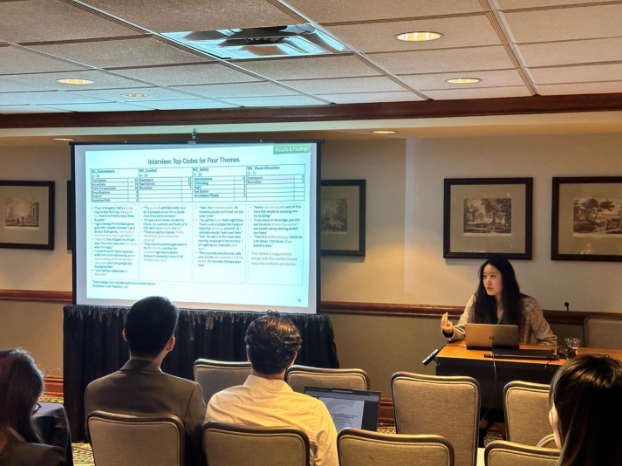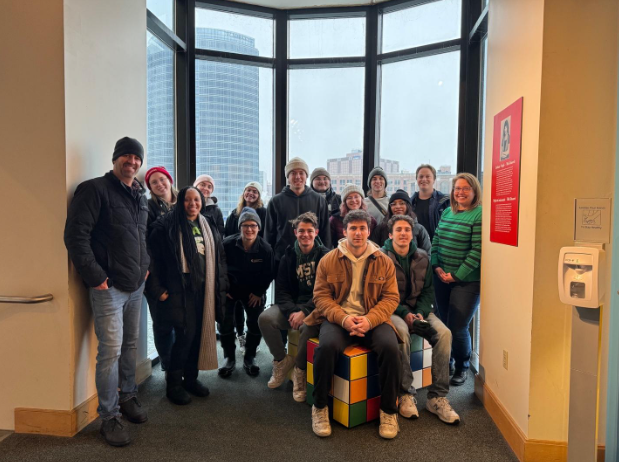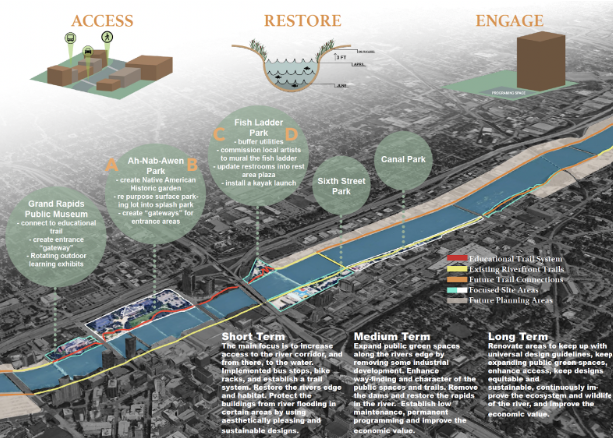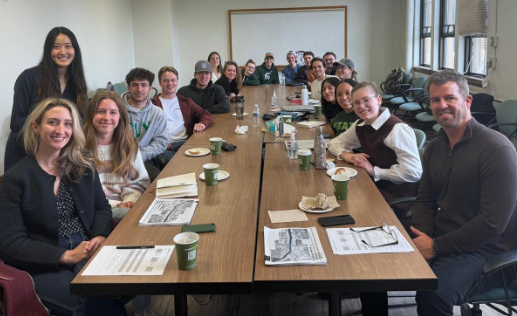LandTexture: Dr. Xiaowei Li's First Year at SPDC
Dr. Xiaowei Li, Assistant Professor of Landscape Architecture at Michigan State University, reflects on her first year with the School of Planning, Design and Construction's LA program.

Overview
Dr. Xiaowei Li, Assistant Professor of Landscape Architecture at Michigan State University, focuses on human-scale behavior and perceptions across healthcare environments, healthy communities, and urban design principles. As a new faculty member, she values the collaborations and support from LA board members, alumni, and LA firms, which provide real-world project opportunities. She encourages students translate research in design development.
A Message from Assistant Professor, Dr. Xiaowei Li
As I conclude my first academic year at Michigan State University, it’s a pleasure to share the support and opportunities that have enriched both my research and teaching within the Landscape Architecture program. My academic background includes a specialization in healthcare design, urban design, and walkability studies.
Over the past year, my research emphasizes human-scale behavior and perceptions in healthcare environments, healthy communities, and walkability of urban spaces. My recent presentation at CELA 2024 at St. Louis, titled “Street Design and Walkability in Urban Hospital-Anchored Neighborhoods: A Qualitative Exploration of Pedestrian Experiences and Behaviors.” emphasizes the importance of human-scale behavior in creating supportive and healthy urban environments. The findings from this study have contributed to developing evidence-based design guidelines that inform the urban design principles. My ongoing work with local communities and non-profit organizations aims to enhance built environment to promote health benefits for both individuals and communities and further generate evidence-based design guidelines.

Teaching in the LA 345 Design Development Studio, in partnership with VIRIDIS Design Group, has been a highlight of my academic year. The studio worked on one of their real-world projects, ‘River for All’, an urban design project focusing on the planning and design of public spaces along the Grand River riverfront in downtown Grand Rapids, MI. This real-world project provided students with the opportunity to apply their skills in a practical setting.
In late January, the students had a field trip to Grand Rapids, hosted by the VIRIDIS Design Group at their local office. This visit offered a firsthand look at a professional landscape architecture firm and included comprehensive tours of Canal Park, Sixth Street Park, and Fish Ladder Park. Students engaged directly with industry professionals and local authorities, including Mark Miller, Managing Director of Planning & Design at Downtown Grand Rapids Inc., and Stephanie Ogren, VP of Science and Education at the Grand Rapids Public Museum, gaining valuable insights into urban planning and design principles, the potentials of the site, and the importance of the public spaces in community development.

Students actively engaged in this real-world project, developing sustainable flood mitigation solutions and designing accessible public spaces that emphasize activity and perception. Students also translated theories and research on their design objectives and urban design principles. The studio format encouraged students to transition from large-scale master planning to detailed placemaking. At beginning, students conducted a context analysis, identifying three key objectives and then developing a master plan for the area along riverfront. In the second half of the semester, the focus shifted as students selected three specific sites within this area to develop detailed designs that apply the three established design objectives, enhancing flood control and public access along the riverfront.

Despite the challenges of a 10-week studio being relatively short for such large-scale and multi-site designs, students significantly improved in storytelling, site analysis, and translating theories and research into practical design principles.
I extend my deepest gratitude to all the faculty, staff, and students for your enthusiastic engagement and support throughout my first year. I am eager to building more collaboration opportunities and advance our research and design emphasis on human-scale behavior and perceptions.




 Print
Print Email
Email





